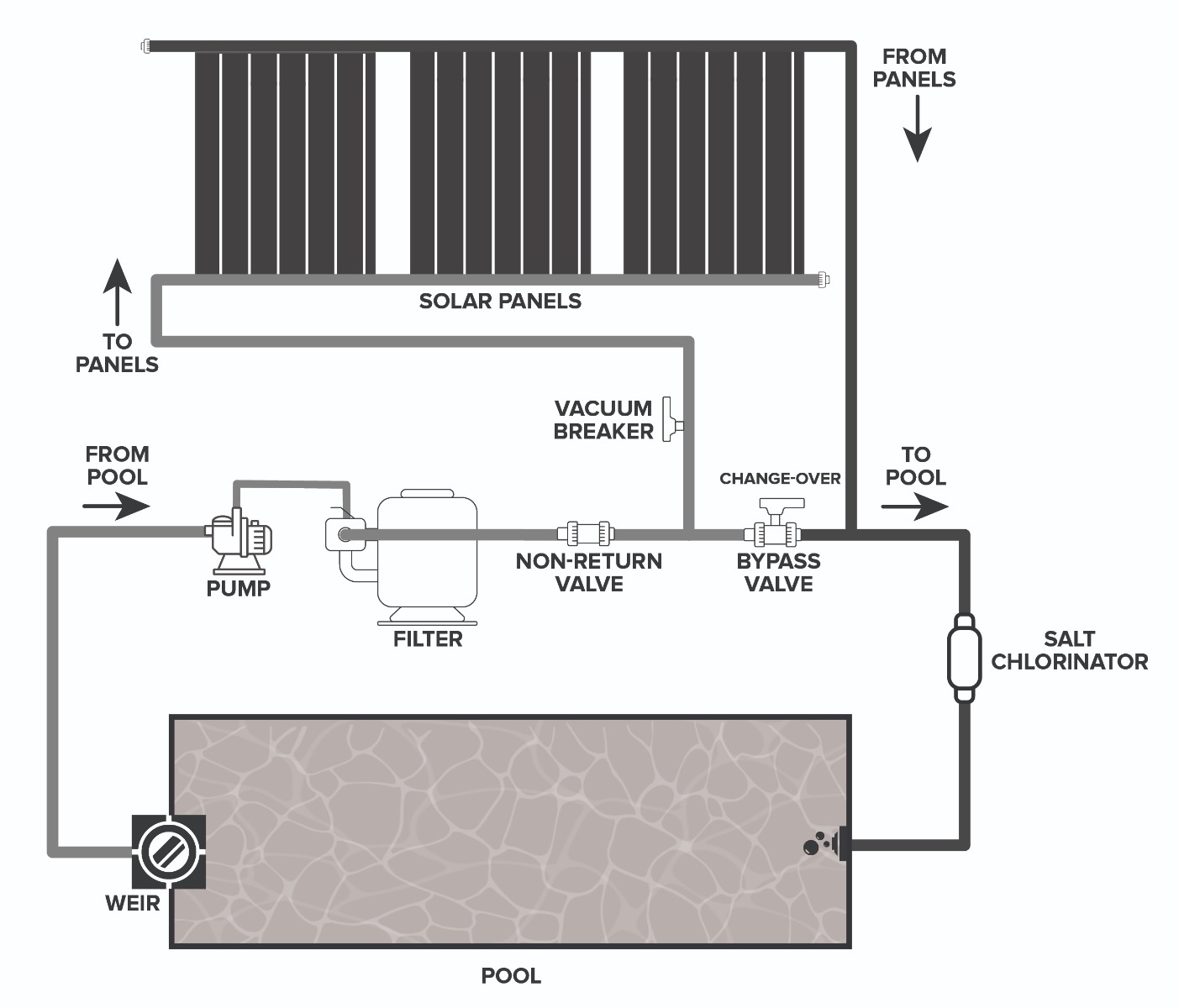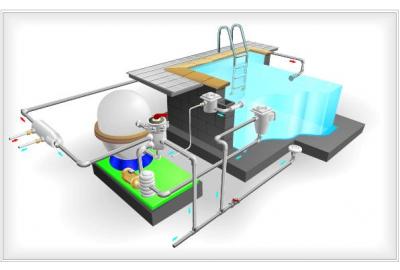There are many components to a swimming pool that work together to make sure the pool runs efficiently and stays clean. When learning how to maintain a swimming pool, it is important to know the different parts and how they work.
There are two sides to a swimming pool system. The suction side of the pool suctions the water from the pool to assist with circulation. This side is made up of the weir, the suction line, the pump, and the filter.
The return side of the system returns clean water back into the pool after being circulated through the suction side. The return side is made up of the return line and the aimflow.
Let’s have a look at all the parts that make up the pool’s anatomy.
The weir
Weirs are an essential part of the swimming pool system. The weir draws water from the pool and sends it through to the pump and filter. This assists in removing contaminants such as leaves and debris in order to maintain the sanitation of the water. Shop weirs here.
The suction line
The suction line is a pipe that connects the weir to the pump. This line is plumbed underground and not visible.
The pump
The pump is powered by a motor which creates a vacuum, pulling water through the filtration system. The motor size is based on the pool volume, filter size and pool equipment in order to run efficiently. The pump also contains a basket to collect all the leaves and debris that have not been trapped in the weir. Shop pumps here. Shop pump spares here.
The Filter
Small debris that is not caught in the weir or the pump basket is trapped in the filter. There are two different types of filters – sand filters and cartridge filters. Sand filters are controlled with a multiport valve. The multiport valve has six settings: circulate/ bypass, filter, backwash, rinse, waste, and close. Water flows from the pool, entering the filter from the top. The water filters down through the filter media and then returns to the pool. Learn more here about the different types of filter media. Shop sand filters here. Shop sand here.
Cartridge filters are cylindrical structures with a cartridge placed inside the filter housing. The cartridge is made up of a plastic cylinder which is surrounded by mesh-like material that’s pleated and capped on both ends. When the water flows into the filter, it flows through the pleats, and the debris gets trapped in the filter. The clean, filtered water then returns back to the pool. Cartridge filters are more efficient and more cost effective to run than sand filters. Shop cartridge filters here.
The return line
Just like the suction line, the return line is a pipe that is plumbed underground, however, this pipe carries the water through the aimflow and back into the pool.
The Aimflow
The aimflow is the fitting on the wall of the pool that directs the water back into the pool after having run through the system. The aimflow should be angled 45 degrees downwards in order to assist with water circulation. Shop aimflows here.
In addition to the two sides of the swimming pool, there are also other parts of the pool system that contribute to a pleasant swimming experience. These include: Solar panels, heat pumps, salt chlorinators, pool cleaners, time switches, and the DB box.
Solar Panels & Heat pumps
Solar panels and heat pumps can extend swimming season by warming up the cold water.
Solar panels are installed on the roof of the building where they are exposed to the sun. They are connected to the pool pump via PVC piping and therefore do not require an external power source. The cold pool water travels from the pump, through the solar panels where the water gets heated. The warm water then travels through the return line, back into the pool. Shop solar panels here.
The Aqua Pro Inverter Plus Heat Pump contains a rotary compressor which enables the unit to change between modes and adjust the speed as necessary. Although the Aqua Pro Inverter Plus Heat pumps do not run off solar power, they are the most energy efficient option if you are looking to install a heat pump. Shop heat pumps here.
Salt Chlorinators
Salt chlorinators use a process called electrolysis to convert salt into chlorine gas in order to sanitise the pool water. Once a chlorinator has been installed, instead of sanitising the pool with granular chlorine, one would need to add the necessary amount of salt to the pool water. The amount of salt to add will depend on the volume of the pool and the type of chlorinator. The chlorinator will automatically convert this salt to chlorine gas and voila, your pool is now sanitised and ready to swim in!
Pool Cleaners
Pool Cleaners are a necessity in a swimming pool. They pick up leaves and debris from the floor and walls of the pool, sending it through the weir and trapping it in the weir basket. Without a pool cleaner, the pool would remain contaminated with a constant build-up of debris. There are three types of pool cleaners: Manual pool cleaners, automatic pool cleaners, and robotic pool cleaners. Shop pool cleaners here.
Time Switches
Time switches can be used to set your pool pump to turn on and off automatically. This can save time as well as electricity as it ensures the pool is not running unnecessarily. Shop time switches here.
DB Box
The DB box could be considered the heart of the swimming pool system. This is the control panel that houses the circuit breakers for the system as well as potentially a time switch. Shop DB boxes here.
The below diagram demonstrates the full function of a pool.

Contact a professional at any of The Pool Team stores for further advice on the anatomy of a swimming pool.

